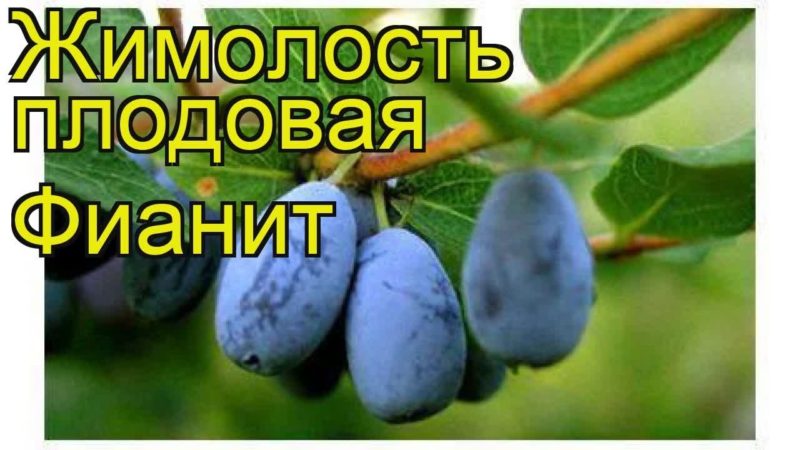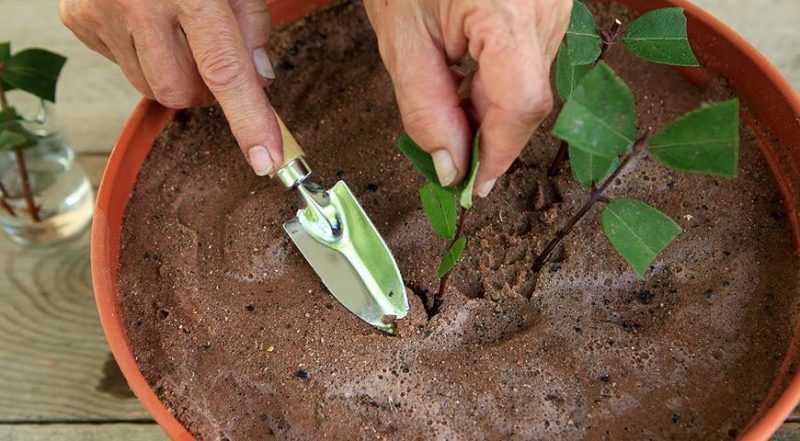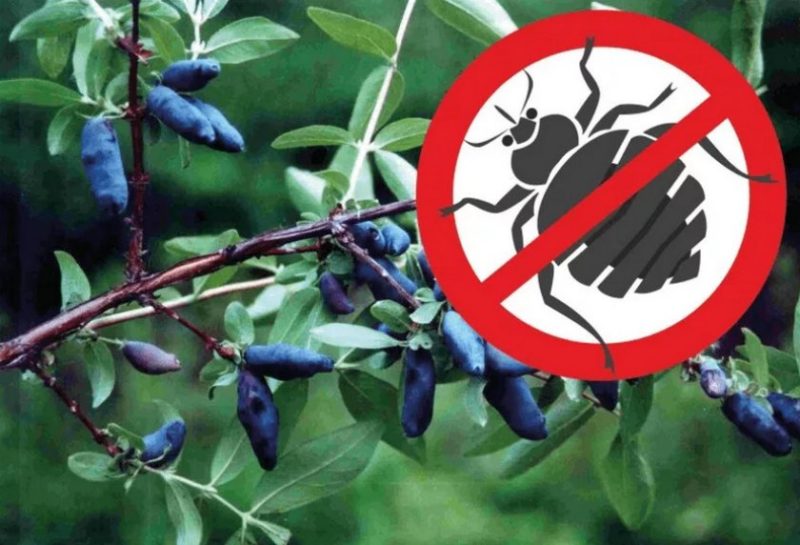Popular resistant variety of honeysuckle Fianit
Fianit honeysuckle has gained popularity due to its resistance to low temperatures, pests and diseases. In addition, this variety has high taste qualities. With minimal care, the bushes produce a bountiful harvest. We will talk about the characteristics and agricultural technology of the variety in this article.
Description of the honeysuckle variety Fianit

The height of a strong and slightly spreading shrub varies from 1 to 1.5 m. The basal shoots have large, ovoid leaves. In spring the bush is covered with pale yellow flowers. After flowering ends, oval-oblong fruits appear on the plant.
Origin and development
The variety appeared thanks to the open pollination of honeysuckle Smolinskaya.
Cubic zirconia was bred by Russian breeders in 1995. It was included in the State Register in 2002. After lengthy research, the crop was classified as a Ural variety.
Chemical composition and beneficial properties
Honeysuckle fruit contains vitamin C, phosphorus, calcium, anthocyanins and antioxidants. There are 6 times more of these substances in berries than in blueberries and red currants.
Fianit honeysuckle also includes:
- vitamin P;
- B vitamins;
- potassium;
- sodium;
- manganese;
- copper;
- magnesium;
- carotene;
- folic acid;
- polyphenol;
- pectin.
Honeysuckle berries activate digestion and increase the secretion of gastric juice. They are used as a diuretic, astringent and anti-inflammatory agent. Fresh fruits are also recommended for anemia, stomach disorders and malaria. Gargle with the decoction.
Features of application
The berries are used fresh, they are used to make jam, compotes, tinctures, and prepare fillings for baking. The fruits and leaves are used in folk medicine.
Fianit honeysuckle is also used in landscape design. Compact bushes with large flowers perfectly decorate any area.
Ripening period, yield and fruiting
The berries of this variety are completely mature at the end of July.
The crop has an average yield. During the season, up to 2 kg of fruits are collected from the bush. The berries ripen together.
Resistance to diseases and pests, cold and drought
The variety has good immunity to many diseases and pests. Cubic zirconia is frost-resistant. The bushes easily survive frosts down to -50°C.
The culture does not tolerate severe drought, like many other honeysuckle varieties. In dry summers, the bushes bear fruit worse, and the berries grow small and sour.
Characteristics, description of appearance, taste
The berries are quite large. Their weight varies from 1.2 to 1.6 g, and their length is about 1.6 cm. The shape of the fruit is oval-oblong. The berries have a sweet and sour dessert taste without astringency or bitterness.
Suitable regions and climate requirements
Cubic zirconia is successfully grown in the northwestern regions and central Russia. It is recommended to plant it in the Moscow region, Siberia, the Urals, the Baltic states, Belarus and northern Ukraine.
Advantages and disadvantages of the honeysuckle variety Fianit
Main advantages:
- good resistance to diseases and pests;
- high frost resistance;
- the berries are sweet and tasty, ripen quickly;
- Cubic zirconia serves as a good pollinator for other varieties of honeysuckle.
Among the disadvantages are:
- average yield when compared with other varieties;
- inability to collect by shaking.
Difference from other varieties and hybrids
The fruits do not fall off after ripening even with strong wind or shaking. The variety also has very good cold resistance – it can tolerate down to -50°C.
Honeysuckle Fianit: features of planting and growing
Following planting rules and following agricultural practices is the key to a bountiful and tasty harvest.
Preparing for landing
Seedlings do not require preparation. Some gardeners pre-disinfect the root system by immersing it in a weak solution of potassium permanganate for 20 minutes.
Soil requirements
It is advisable to plant the variety on well-drained and nutritious soils. If the soil is clayey or sandy, it is mixed with sand and peat, and also well fertilized.
Selecting a site and preparing holes
Honeysuckle should not be planted in lowlands where water accumulates after rain. This leads to rotting of the roots.
To obtain good harvests, the place must be well lit by the sun, and also protected from strong winds and drafts.
Well preparation:
- A hole is dug at the selected location. The depth and diameter should be about 40 cm.
- A drainage layer of dry and fresh branches is placed at the bottom.
- The excavated soil is mixed with potassium sulfate, wood ash and humus. Mix everything well and pour it into the hole in a mound.
Dates, scheme and rules of planting

The seedlings are transferred to the ground in the fall, 4 weeks before the arrival of frost.
Planting process:
- The roots of the seedling are spread over the mound located in the hole.
- After this, they are sprinkled with the prepared substrate.
- The top layer of earth is compacted and a bucket of water is poured out.
- The tree trunk circle is mulched.
In a correctly planted seedling, the root collar is recessed by 5 cm.
Features of cultivation
After planting, it is important to ensure good care. Honeysuckle Fianit is an unpretentious variety. But if the care is correct, the harvest will be richer.
Cubic zirconia does not need constant attention, but to obtain a bountiful harvest for many years, certain rules will have to be followed:
- The ground under the bushes is regularly loosened and cleared of weeds so that a sufficient amount of air penetrates to the root system.
- In autumn, the soil is dug up to a depth of 10 cm.
- From the 4th year after planting the bushes feed organic. To do this, before the autumn digging, the ground around the plant is mulched with peat and humus (1 bucket each), as well as wood ash (1 liter jar).
- If the summer is too dry, the bushes are watered. To do this, make trenches 10 cm deep around the plants and pour water into them. 2-3 buckets are poured under each bush. After the water has been absorbed, the trench is dug in and mulched.
- From the 10th year, dry and broken branches are removed from the bushes every season.
- In the 15th year, the plants are rejuvenated. To do this, all old branches are completely cut out.
Honeysuckle does not like too much moisture. It is watered only when the ground is very dry.
Pollinators
A lone honeysuckle bush will not bear fruit, since this crop is not self-fertile. In order for pollination to be complete, 2 plants are planted on the site at a distance of 1.5-2 m from each other. Pollination occurs due to insects.
For Fianit, the Amphora variety is considered the best pollinator.
Disease and pest control

Diseases and pests of honeysuckle Fianit:
- Sheet mosaic. The disease appears as light olive spots on the foliage. It is dangerous because it cannot be cured. To prevent the disease from spreading to neighboring plants, the bush is dug up and burned.
- Brown spot. Most often it affects bushes in mid-summer.This is a fungal disease in which the leaf blades become covered with brown spots, after which they dry out and fall off. Penconazole is used for treatment. Spraying is carried out after harvest.
- Spider mite. The pest covers the plant with a thin film, causing it to stop its development. To destroy spider mites, the drug “Malathion” is used.
- Honeysuckle fingerwing. The pest eats the berries. The presence of the insect is determined by early ripened and crooked fruits. Such berries are not eaten; they are collected and burned.
Difficulties in growing
During too dry summers, you have to constantly monitor the level of soil moisture. If this is not done, the harvest will be meager and of poor quality. In addition, there is a high probability of diseases or pest attacks.
Harvest and storage
The fruits are picked by hand, turning each berry for dry tearing.

How and when to collect
Harvest at the end of July. At the same time, try not to damage the thin skin. But even whole fruits of the Fianit variety cannot be stored for a long time without special conditions. In terms of keeping quality, they are the same as black currants. Therefore, it is recommended to collect Fianit honeysuckle on the day of processing.
Storage Features
For fresh consumption, the berries are stored in the refrigerator for up to 5 days. For longer storage, they are frozen or processed.
Preparing for winter
Honeysuckle Fianit tolerates frost well, but young plants (up to 3-4 years old) are prepared for winter:
- In autumn, 3-4 weeks before the onset of the first frost, the plants are watered abundantly.
- The tree trunk circle is mulched with a thick layer of humus, peat or straw.
- The shoots are covered with spruce branches or agrofibre.
Reproduction
Methods for propagating honeysuckle:
- Seminal. This method is used exclusively in nurseries, as it is too labor-intensive. With its help, new varieties and hybrids are developed.
- Cuttings. In May, the strongest branch is cut into cuttings 10 cm long. It is important that they have 3-4 buds. The lower leaves of the cuttings are removed, and the upper ones are cut in half. Planting material is soaked in a growth stimulator, after which it is planted in a nutrient substrate. By autumn the cuttings will be ready for transplanting.
- Dividing the bush. A bush several years old is dug up and carefully divided into several parts. Each is planted in a separate hole. Before planting, the roots are soaked in Kornevin, and the branches are shortened by a third.
Reviews from experienced gardeners
Summer residents note the unpretentiousness of the plant and the high taste of the berries.
Olga Pavlovna, Omsk: “I really love honeysuckle. Here it grows in natural conditions, but we don’t have time to go into the forest and pick berries. Therefore, I decided to plant the crop in my garden. I chose Fianit because it was recommended as an unpretentious and cold-resistant variety. In addition, the berries have a dessert taste. I usually preserve the harvest and make jam.”
Marina Alexandrovna, Okha: “I have been growing cubic zirconia for more than 15 years. After planting new seedlings, the bushes produce a harvest in the third year. The berries are large and tasty, well suited for compotes for the winter. The plant does not need special care. The main thing is not to forget to water it on time. I recommend this variety to everyone. In addition to delicious berries, it also pleases the eye with its appearance during flowering.”
Conclusion
Honeysuckle Fianit does not require careful care. It is excellent for planting in northern regions. With regular watering, pruning and timely application of fertilizers, the bushes produce good yields for 20-30 years.